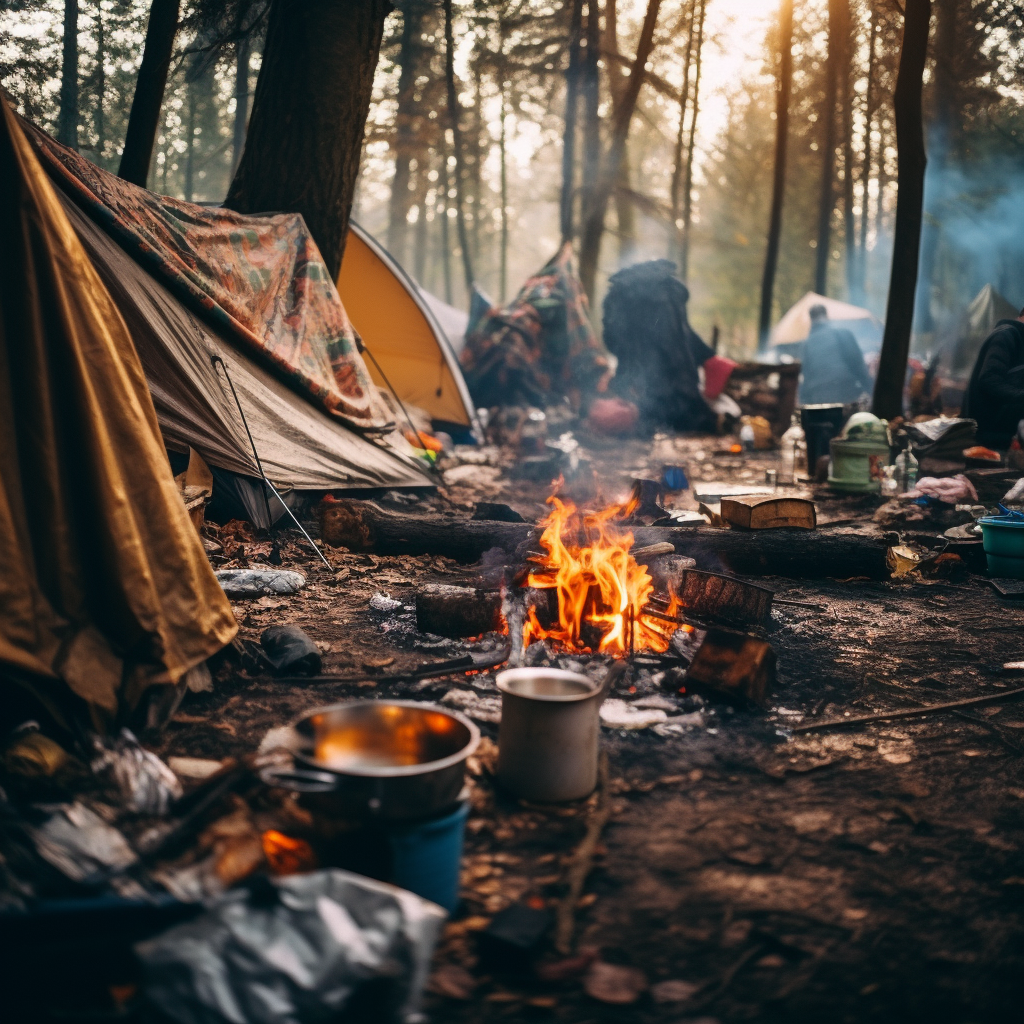The issue of fires caused by homeless encampments in the United States has been a growing concern in recent years. These fires, often started by cooking or heating equipment, can quickly spread to nearby structures and vegetation, causing significant property damage and posing a serious threat to public safety.
In Los Angeles alone, the Fire Department reported that fires related to homelessness occurred at a rate of 24 fires per day, making up 54 percent of all fires the department responded to in the first quarter of 2021. Similarly, in Portland, data shows 803 ‘homeless-related’ fires in 2019, in which 19 people were injured, and three were killed. In the subsequent years, the number of fires impacting homeless people continued to increase.
On a national scale, local fire departments responded to an estimated 1.35 million fires in the United States in 2021. These fires caused 3,800 civilian fire deaths and 14,700 reported civilian fire injuries. Property damage was estimated at $15.9 billion. While it’s challenging to determine the exact proportion of these fires that were caused by homeless encampments, it’s clear that this is a significant and growing problem.
Addressing this issue requires a multi-faceted approach. This includes providing adequate resources and support for homeless individuals, implementing fire safety education programs in homeless communities, and developing strategies to manage and reduce the risk of fires in homeless encampments. By taking these steps, we can help to mitigate the risk of fires, protect vulnerable populations, and safeguard our communities.
The United States is grappling with a significant homelessness crisis. As of early 2022, approximately 582,462 people were experiencing homelessness across America. This figure represents roughly 18 out of every 10,000 people. The vast majority (72 percent) were individual adults, but a notable share (28 percent) were people living in families with children.
- Portland, Oregon: In 2021, Portland Fire and Rescue reported more than 4,300 homeless-related fires, a staggering 445 percent increase over the 803 fires that had been reported by Portland fire officials in 2019.
- Los Angeles, California: In Los Angeles, homeless-related fires jumped roughly 150 percent, from about 3,700 in 2019 to over 9,000 in 2021, according to the Los Angeles Fire Department (LAFD).
- San Francisco, California: The San Francisco Fire Department reported more than 3,500 homeless-related fires in 2021, a 75 percent increase since 2019.
- Phoenix, Oregon: The Almeda Drive wildfire tore through Phoenix on September 8, 2020, causing widespread property damage with loss of thousands of structures.
The Rising Cost of Home Ownership
One of the key factors contributing to this crisis is the increasing cost of home ownership. Historically, an average house in the US cost around 5 times the yearly household income. However, since 1965, home prices have increased 7.6x faster than income. After adjusting for inflation, an average home valued at $171,942 in 1965 is worth $374,900 today — a 118% increase. By contrast, median household income has increased only 15% since 1965: from $59,920 in 1965 to just $69,178 today.
This disparity between income and housing costs has made it increasingly difficult for many Americans to afford a home. The median home prices have increased at four times the rate of household incomes since 1960, leading to imbalanced price-to-income ratios in most major metropolitan areas. Nationwide rents have increased at twice the rate of household incomes since 1960, making saving for a down payment increasingly difficult.
The Role of Investment in Residential Housing
A brief analogy: Assume a teacher in a classroom decided that students could own multiple desks and that they could then rent the desks they purchased to other students in the class. What would happen to the price of desks if two wealthy students decided to take advantage of this opportunity? The price of desks would go way above lunch money and many students would end up deskless. In a nutshell that is what has and is happening to the US residential property market.
Large investors have stepped up their real estate purchases, including of single-family homes in urban and suburban areas. One out of every six homes purchased in the second quarter of 2021 was acquired by investors. These purchases are unlikely to meaningfully boost supply in the lower-cost portions of the rental market, as investors charge more for rent to recoup higher purchase costs. This trend is driving up home prices for lower-cost homes, making it harder for aspiring first-time and first-generation home buyers, among others, to buy a home.
Proposed Solutions
To address this crisis, we need to explore solutions that would eliminate investments in residential housing to lower the entry point of home ownership. Here are some potential strategies:
- Increase the amount of long-term affordable rental housing, especially in high-opportunity communities. This would provide more options for individuals and families who cannot afford to buy a home.
- Protect existing affordable rental housing from physical deterioration and financial instability. This would prevent the loss of currently available affordable housing units.
- Reduce zoning and financing barriers to affordable housing. This would make it easier to build new affordable housing units and convert existing buildings into affordable housing.
- Implement policies to limit the ability of large investors to buy up residential properties. This would help to keep home prices more affordable for individual buyers.
By implementing these strategies, we can begin to address the homelessness crisis and make the dream of home ownership a reality for more Americans.





